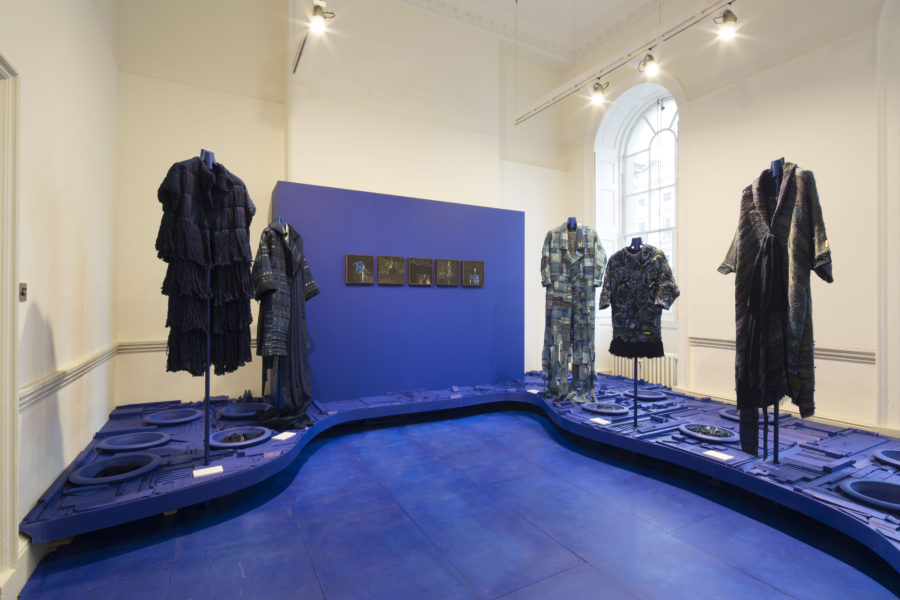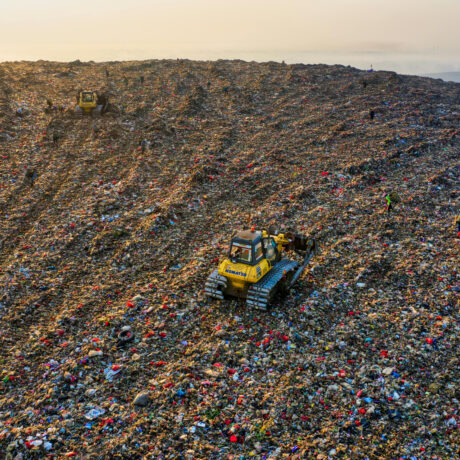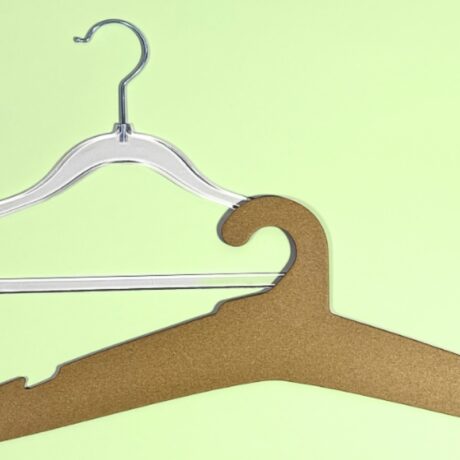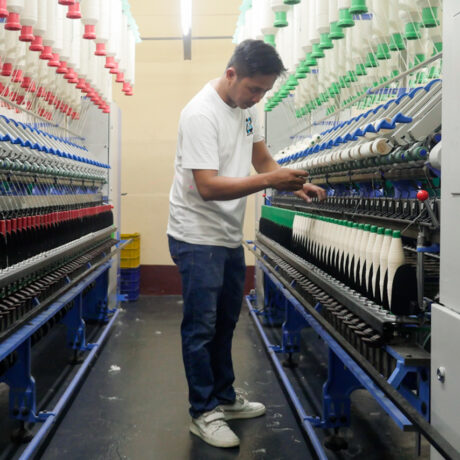Brave New Worlds: 16 designers from 16 countries around the world shake up fashion’s landscape in this year’s International Fashion Showcase.
For Cedric Mizero, a self-taught artist and designer in training, the problem is access. Life in the rural village in Rwanda where he grew up, a 7-hour drive from where he now lives in Kigali, is changing rapidly – and sometimes not for the better. His sculptural ball gown beautifully crafted entirely from red and white capsules containing some form of medicine, is his protest about how his little village in the middle of nowhere has been flooded over the last few years with western medicines. You might think this is a good thing, but these drugs, available to buy freely over the counter of everyday shops, come packed in boxes with instructions, descriptions, and warnings all in English. Nobody in his village can read English but they take the tablets anyway, thinking they are preferable to the herbs and tinctures they have traditionally ground up to treat fevers and illness. “My mother was taking these pills until she became very ill and had to visit a doctor in the city who told her to stop taking them as they were making her sick!” says Cedric.
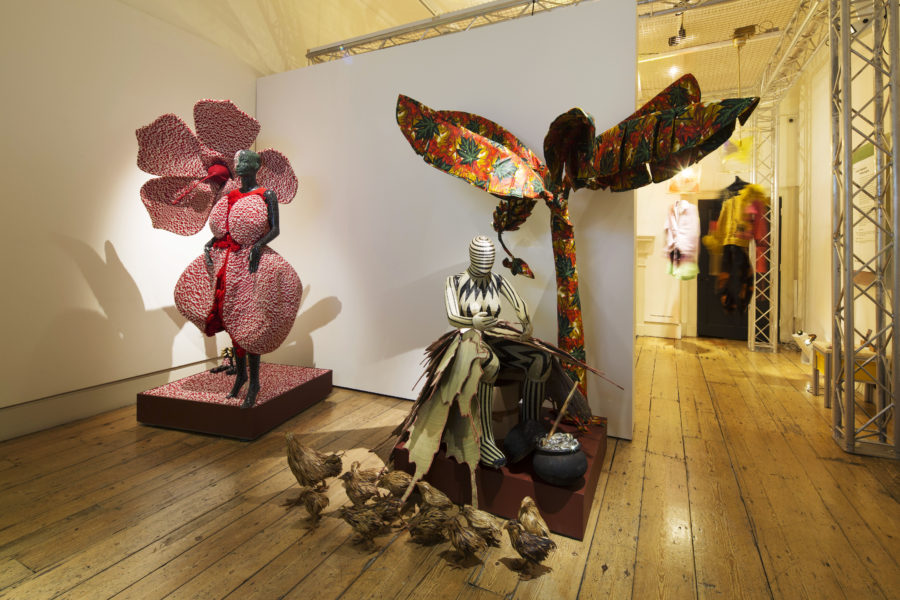
Access to western products, whether random medicines or iPhones is not always the route to progress. The tiny black and white plastic beads are imports too – most likely from China. But at least now Cedric can use them to entirely cover a Made in China mannequin in his village’s traditional beadwork. “In the past five of these beads would be enough to buy a slave,” he says. Always a creative child, Cedric was taught to knit by his mother. Instead of traditional wool, he would use banana leaf fibre or the excretions of an insect which, he explains, made a thread strong enough to knit from. There are a lot of references to banana plants in his installation. He has even used them to weave a beautifully expressive family of a hen and her 12 chicks, representative of his own family. He is the one walking in the wrong direction.
For other designers showing as part of the International Fashion Showcase: Brave New Worlds The Changing Landscape of Fashion, the challenge is excess. The designers representing Netherlands, Vietnam, India, and Lebanon all address the issue of over production and waste. Naushad Ali who works in Pondicherry in south India, calls his collection Garbage, taking scraps of fabric otherwise destined for landfill, dyeing them with natural indigo. He uses a range of ancient craft techniques from weaving to crochet and patchwork to create a collection of precious, hand-made pieces that will be treasured forever.
For Tom Trandt who studied at Parsons in New York before returning to Vietnam to launch his brand Moi Dien in Saigon, there was a political message in his A Quiet Scream collection which became glowed under UV light showing how clothes can give their wearer a voice. In Vietnam, where dissent is illegal, young people write slogans on the backs of their clothes so they are visible only from the back. It’s a risky business and they might only wear the slogan for a day for a post on social media to make their point. Trandt is also conscious of Vietnam’s role as a “factory for the world”, and is shocked by the amount of waste left behind in his country from the overproduction of western brands. His collection is made using zero waste cutting techniques and he pieces together strips of waste fabric to make his clothes.
In Beirut, Roni Helou works directly with his clients making new clothes from deadstock fabrics. He is a graduate of Creative Space Beirut which is an NGO providing free education in fashion design. He describes himself as an activist and his work is all based around the relationships he builds both with the factories that give him their ends of rolls and deadstock textiles otherwise destined for landfill and the women he collaborates with in the process of making bespoke pieces for them. In Lebanon, as in much of their world, there is a build up of rubbish and he campaigns for environmental and animal rights. Veganism is still a minority movement in Lebanon but Helou uses his position to talk to his clients asking them questions like where they think the fur on their bag charm came from, he likes to start them thinking about the provenance of their clothes and the materials they are made from.
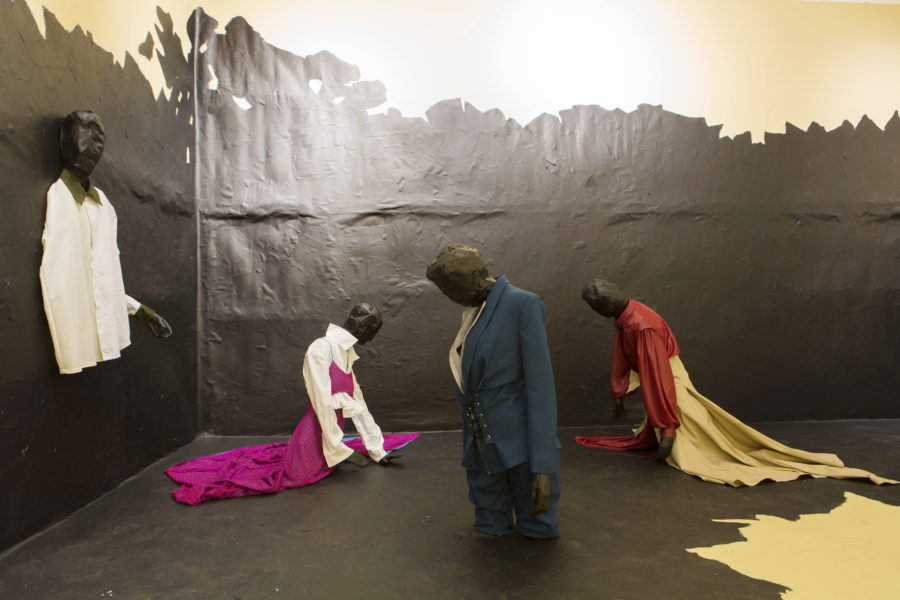
Duran Lantink (the man responsible for Janelle Monae’s vagina trousers for her PYNK video) the designer representing the Netherlands, calls his collection Straight From the Sale Bins and his commentary is around Black Friday and over consumption as well as over production. His clothes and accessories are collages of used clothes, mostly branded, designer pieces – his logo is made up from letters from different brands – he finds in second hand shops and online. Liberty gave him fabrics and are hosting a pop up installation for him in March.
“I think the main problem is over production and over consuming. People say that fashion is dead but that’s not true. It’s more the way it is sold is dying. We are not supposed to have everything available at any time at the lowest price. That’s just not how it was meant to be. Somehow in this world it went wrong and it’s now a good time to show different ways of working.” His solution, as well as making collages of old, damaged or unwanted clothes which he makes on demand everytime a store sells something, is to create a service where clients can send him pictures of pieces in their wardrobe they no longer want. He will create a collage of those clothes and send the idea back for approval and then he will work with seamstresses at centres around the world where you can send your pieces locally to be expertly made into something new.
When I ask if his upcycled aesthetic is enjoying a fashion moment right now, he says it is, but he has been working in this way since starting at Rietveld Academy in 2011. “You have these charity shops full of clothes, why would you make something new?” This is not a trend. “This is my method,” he says, “I can’t imagine working any other way.”
Every one of the sixteen designers in the showcase has something so relevant to say, a reflection on their place in the world. Their installations are testament to the mentoring they received from London College of Fashion, designer Christopher Raeburn and journalist and BFC Ambassador for Emerging Talent, Sarah Mower. “I learned so much about national and political issues in countries I’ve never visited from getting to know these designers,” she writes in her notes for the show. And that, surely, is what fashion at its best should be about.
International Fashion Showcase 2019 – Brave New Worlds: The Changing Landscape of Fashion is at West Wing Galleries, Somerset House, London until 24 February. www.internationalfashionshowcase.com
